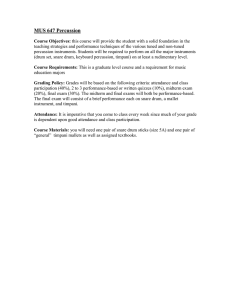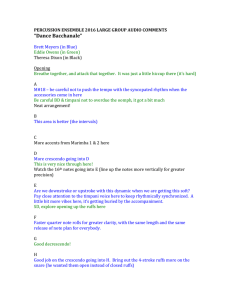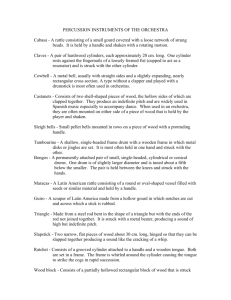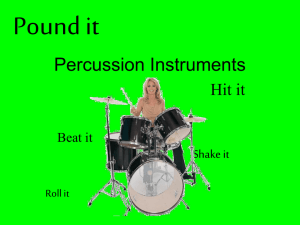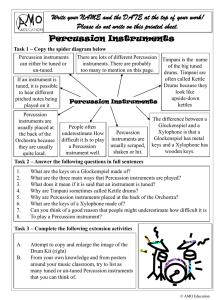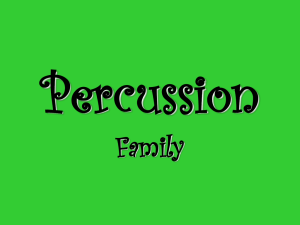Timpani_MelodyLewis
advertisement
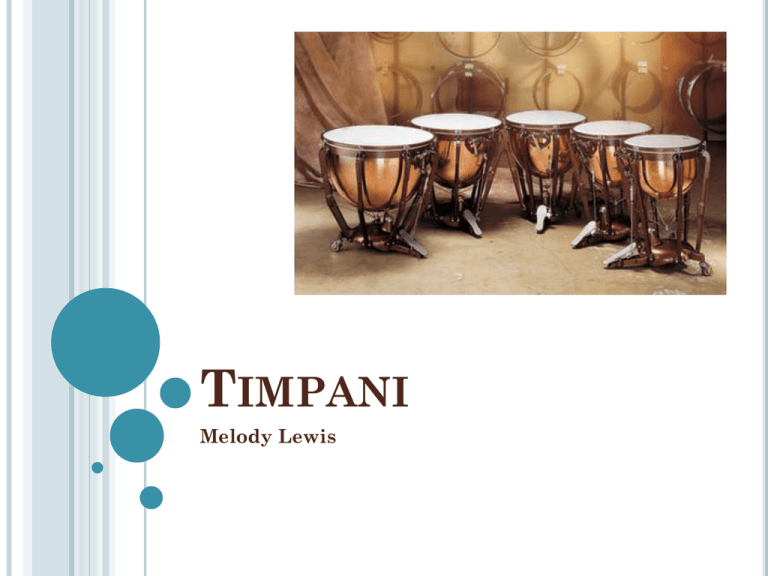
TIMPANI Melody Lewis MEMBRANOPHONES Percussion instruments that use vibrating membranes to produce sound. Such as timpani, tom-toms, snare drums and bass drums Sound production in membranes begins with the oscillation of the membranes. More complicated modes and frequencies are not integrally related. Modes in a drumhead are compared to inhaling and exhaling. http://paws.kettering.edu/~drussell/Demos/Membran eCircle/Circle.html HISTORY OF THE TIMPANI Also called the “kettle drum” Descended from a small pair of drums called “nakers.” Used in Europe for military ceremonies. Brought to Europe by King Henry Evolved into the large orchestral timpani HISTORY CONT. Until the 19th century, the pitch of the timpani was altered by turning a series of threaded bolts called taps which tightened or loosened the tension on the head thus raising or lowering the pitch. In 1812, a ‘machine’ timpani was produced with a single tuning handle. The most common mechanism used today is a pedal with a spider-like system of metal rods connected to a foot pedal and tension screws. DESIGN Considered a ‘tuned’ percussion instrument because it can produce a note or definite pitch. Pitch depends on the drum head. Size of drum head. Material stretched over the drumhead; plastic or animal skin. Tension rods or tuning screws are placed regularly around the circumference of the bowl and are used to adjust the pitch. PARTS SOUND POSSIBILITIES Variety of sticks and mallets used to strike the timpani. Each stick or mallet produces a different sound. Felt-tipped Cotton Plastic WORKS CITED http://www.helium.com/items/1753798-instrumentsof-the-orchestra-the-timpani http://www.colorado.edu/physics/phys1240/phys1240_ fa06/pdfdocs/JohnGalmDrums.pdf http://www.andsim.com/timperc.htm http://www.ehow.com/about_6574659_informationtimpani.html http://www.helium.com/items/1753798-instrumentsof-the-orchestra-the-timpani
